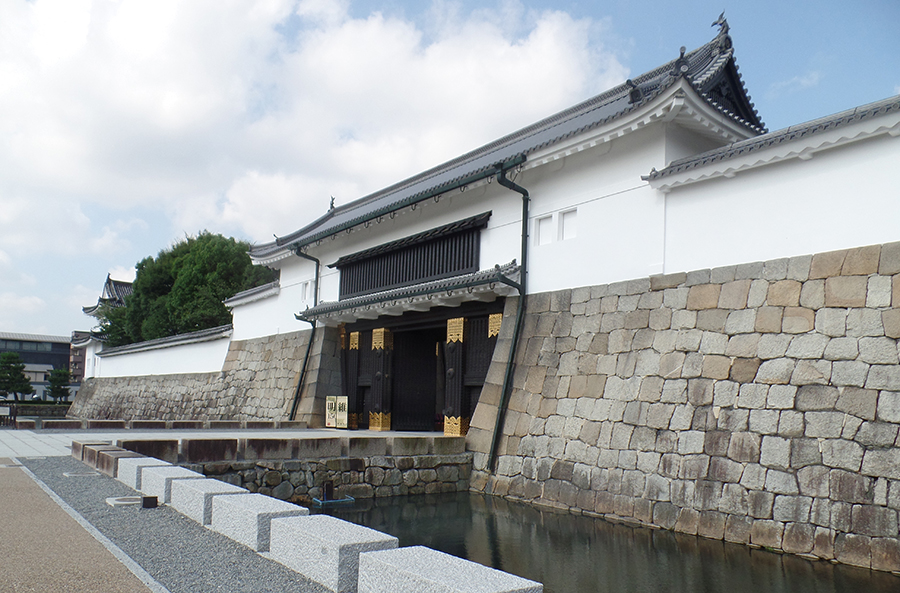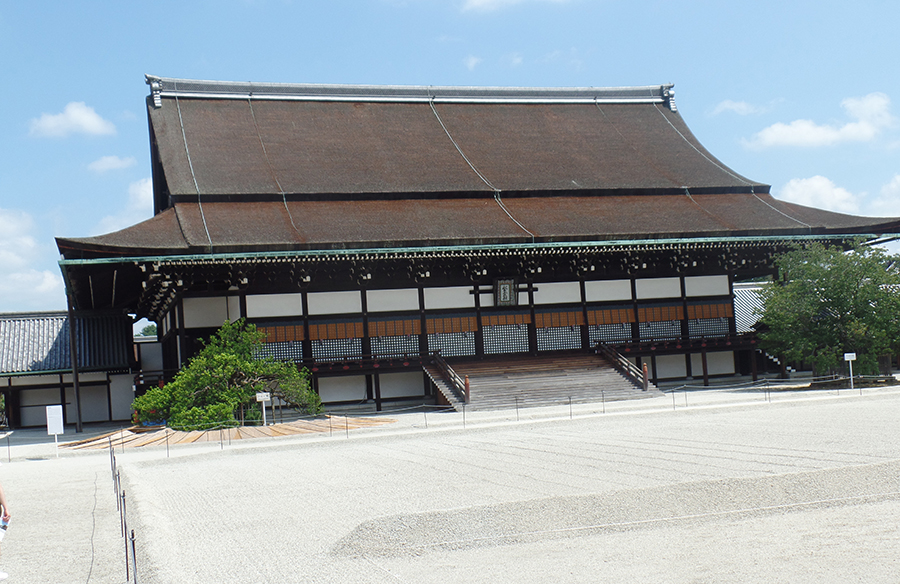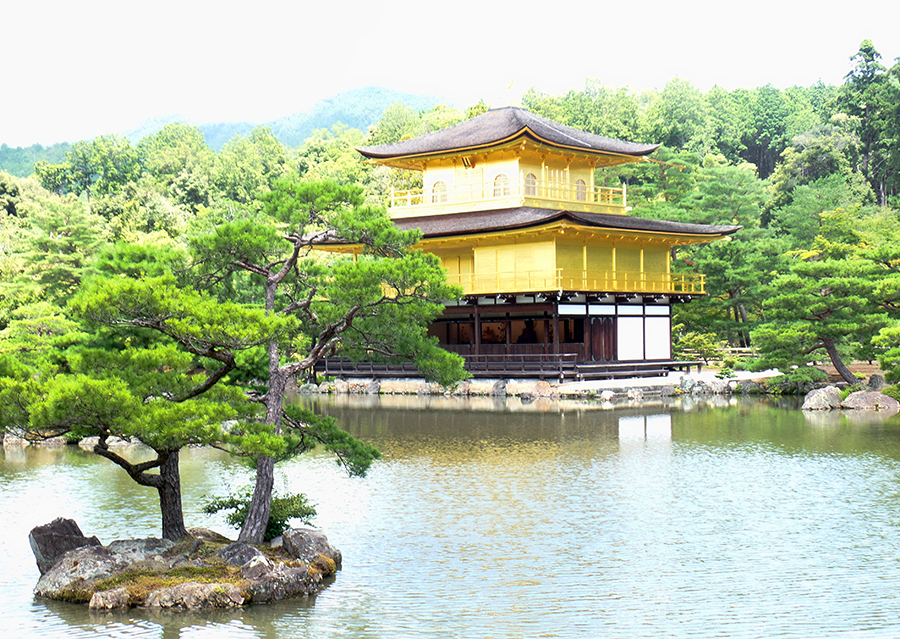It took a little over two hours to reach Kyoto from Tokyo on the Shinkansen bullet train which departs from Tokyo Station. We took the first train out at 6:00 am which meant no breakfast and met up with Kenji Matsuyama, a Government Licensed Tour Guide Interpreter (km_rugger@yahoo.co.jp) at the Kyoto Main Station. We asked a security official where a clock tower was that we were looking for as the place to meet Kenji-san only to find him standing next to the security official holding a sign with our names.
The first thing we did was to head off to buy a one day pass on the Kyoto City Subway, City Bus and Keihan Bus, (https://one-daypass.kyoto). This cost 900 yen per person but was well worth it given that we needed to take both the subway and city buses to visit the three sites we had chosen.
The first site we visited was the Nijo-jo Castle, which later became an Imperial Villa located at 541 Nijojo-cho, Nijo-dori Horikawa Nish-iru, Nakagyo-ku, Kyoto 604-8301, Japan. (Tel: 075-841-0096) website: Http://www.2.city.kyoto.lg.jp/bunshi/nijojo.

Nijo-jo Castle in Kyoto
Nijo-jo Castle was built at the request of the first Tokugawa Shogun, Ieyasu, with construction commencing in 1601 and completed in 1603. Ieyasu became Shogun as a result of a victory ending a prolonged civil war (1573-1600 – Battle of Sekigahara). It is said that Ieyasu succeeded where his chief rivals failed because he waited. While one rival would kill anyone he thought unworthy and the other would try to make the party worthy, Ieyasu did nothing, waiting for the situation to resolve itself. Thus he waited for his opponents to commit to bad strategies and was able to vanquish them. He was appointed Shogun by the Emperor in 1603 and came to Nijo-jo Castle to announce his appointment to the feudal lords. He immediately decamped to Edo, or what is now known as Tokyo. Nijo-jo Castle served as the Kyoto residence of the Shogun on the few visits he made to the Imperial Capital as Kyoto remained the home of the Emperor. When the Shogun was not in residence, the Nijo Zaiban samurai guards were garrisoned at this location. The Emperor made one visit to Nijo-jo Castle in 1626, which was the last time the estate was refurbished until 2011. Nijo-jo Castle also served as the bookends of the Tokugawa shogunate. This is the site where Ieyasu announced his appointment and also where his 14th descendant, Yoshinobu Tokugawa announced the return of political rule to the Emperor after demands were issued by Commodore Perry of the United States Navy to open Japan to trade with western nations. This return of power to the Imperial family was known as the Meji Restoration.
As we toured the Castle it was evident that during the 250 years of peace during the Tokugawa shogunate most of those who came to petition or discuss business with the Shogun were faced with long waits. Most of the rooms were for those waiting to see the Shogun’s administrators as the Shogun himself was rarely here. There were three classes of waiting rooms, one for those who had opposed the Shogun during the civil wars. These rooms had painted tigers stalking prey on the walls. Rooms for those who had supported the Shogun during the wars which had flying cranes painted on the walls. The third set of rooms was for visiting Samurai who were either waiting for their feudal masters or were there on personal business with the Shogun or his administrators. These were decorated with images of cherry trees. The symbolism was clear: intimidation for those who were not loyal during the war, images of long life and prosperity for those who were, and peace and tranquility for the warriors who protected them all. One other feature that Kenji-san pointed out was that the floors of the castle were constructed to create noise when someone walked on them, which would reveal any intruders such that internal guards could quickly react to any threat. Indeed, so concerned was the Shogun with his own safety that even when he gave audiences he had Samurai in the next room who would come to his rescue if he but clapped his hands. Obviously no one gave the Shogun a round of applause.
The second site we visited was Kyoto Imperial Palace (3 Kyotogyoen, Kamigyo-ku, Kyoto 602-8611 –website http://www,kunaicho,go,jp/), which began construction in 794 and remained the home of the Emperor until 1869 when he moved to Edo (Tokyo) after the Meji restoration. At that time the Emperor assumed control of the Tokugawa Shogunate estate. From 794 to 1331 it was one of several temporary residences, but beginning in 1331 it became the permanent Imperial Palace until 1869, a period of over 500 years, although a home to the Emperor for more than one thousand.

Imperial Palace Kyoto
The various structures were often destroyed by periodic fires with the current structures having survived since 1855. Since this palace is an active residence for the Emperor and his family we were not permitted to visit inside the structure. However, a walking path around the collection of buildings did permit us to visualize what it was like to live here. A pond adjacent to the family quarters brought cooling moisture to the back windows in the heat of summer and served to moderate the cold in the winter.
One feature of the Kyoto Imperial Palace is the Emperor’s Throne and the Empress’ Throne. The primary use of these thrones in modern times has been during enthronement ceremonies. The current thrones were constructed in 1913 and first used for the enthronement of Emperor Taisho. When the current Emperor was enthroned, both thrones were transported to Tokyo for the ceremony. With the next transition scheduled for May 2019, plans are afoot to transport the thrones yet one more time.
The final site visited was the Kinkaku (the Golden Pavilion)/ Rokuon-ji Temple, located at Kinkakuji-cho, Kita-ku, Kyoto 603-8361 (http://www.kinkaku-ji.or.jp). Kinkaku is a structure intended to hold relics of Buddha. It is part of the larger Rokuon-ji Zen Buddhist temple, in the Shokokuji School of the Rinzai Sect. It was built by Ashikaga Yoshmitsu, 3rd shogun of the Muromachi period some time shortly after 1397 when he bought the land and first built a villa for himself.
The construction of the pavilion was unique. The first level is built in the shinden style of the 11th century aristocracy without golden exterior; the second is in the buke style of the warrior aristocracy and is the only part of the building to be golden both inside and out. The third is in the Chinese zenshu-butsuden style, golden on the exterior, but with white walls and wood floor. The structure is made of lacquer on the top two floors covered with gold foil. This unique overlay makes for a brilliance that would not be possible with other methods. The entire structure is topped by a gilt Phoenix bird, matching the floor just beneath. The structure sits on the edge of a pond garden. Images were on display of the pavilion just after a snow covering, creating a magical moment in time of the bright gold building setting in a white snowy paradise.
While both the Nijo-jo castle and the Imperial Palace are easily accessible from subway stops, the Golden Pavilion is not. Five different city busses approach the site within a short walk which is approximately ten minutes from the city bus terminal.

Gold Pavilion Kyoto
Overall we did not tarry at any of the sites, encountering another mid 90s day with very high humidity. We chose to call it a day early, skipping lunch to take an earlier Shinkansen bullet train back to Tokyo. We visited the primary sites of interest and gleaned the primary facts from our questions of Kenji-san. Overall, this visit connected many dots for us in understanding the events that led up to the Edo period of shoguns to the Meji restoration.
When we returned to the hotel the first order of business was a long hot shower to finally become bearable again. We intended to go to Osteria Arrezzo, a restaurant highly recommended by a colleague who said she had the best steak she had eaten anywhere in the world. However, the hotel confirmed for us that the restaurant did not have an English menu or anyone on their staff who spoke English. So navigating a meal there would be a real challenge. The hotel then recommended two other restaurants in the area, however when we noted that the average prices were $200 per person we chose to eat once again at the hotel, only this time we chose room service where they brought a table to the room and we were able to have a nice quiet dinner together. I ordered the won ton soup and a pastrami sandwich which more than filled me. My spouse had the same Acai Yogurt Bowl and a two egg omelet, which was not overwhelming in size and was just the right amount for her.
On our last morning in Tokyo we wandered by the central train station, also known as Tokyo Station. The main building was constructed more than 100 years ago of red brick. It was badly damaged in the war, but rebuilt and more recently refurbished. The train station faces the gardens that surround the Imperial Palace. While we could not enter the palace as it is the official residence of the Emperor, we did wander in the gardens for a bit taking in the historical significance of the site which had been occupied by a national figure of power since the 1590s. The pine trees, water filled moats and Traditional pagoda style buildings are a very memorable sight.
Later that day we took the Narita Express from Tokyo Station back to the airport for flight to Taipei and the next leg of our journey.





No Comments